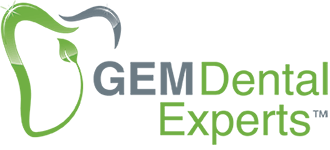
May 10, 2023
by Gabriele Maycher, CEO, GEM Dental Experts Inc. BSc, PID, dip DH, RDH
-
Q: The new global periodontal classification talks a lot about predisposing and modifying factors impacting client outcomes. How does this affect client treatment?
A: This change is what makes the new global classification brilliant. It moves us away from a solely biofilm-focused model and pushes us to practise precision medicine. Since each client is unique and presents specific challenges regarding biofilms, predisposing factors, and modifying factors, we must address all three areas in our treatment plans.
Remember that “plaque accounts for only 20 percent of the direct risk of developing periodontitis.”1 If we’re not addressing the other 80 percent of periodontal health and disease determinants – lifestyle factors, acquired and developmental conditions, host response, and so on – we’re not providing client-centred care.
So, let’s break down the types of procedures included in the treatment planning of nonsurgical periodontal therapy (NSPT), keeping in mind that while some of the procedures will be included in the treatment of all clients, other procedures will be client-specific based on existing controllable or non-controllable predisposing and modifying factors.
Removing Biofilms- Client Education: This is a critical component of NSPT. From the onset of treatment, the client must understand the long-term implications of progressive periodontal disease in terms of treatment outcomes, the risks of nontreatment, and after active therapy, the need for regular maintenance appointments to keep the periodontal condition stable.
- Oral Self-Care: Effective daily home care is the mainstay of success. Teach clients what is currently considered “best in class,” like oral irrigators and power toothbrushes. Keep your message simple for better complianc
- Debridement: Periodontal instrumentation is always an essential component of NSPT. The thoroughness of periodontal instrumentation and spending the appropriate amount of time getting to endpoint will determine the overall success of NSPT in most clients.
Treating Predisposing Factors
Correction of local contributing factors or conditions that contribute to the accumulation of dental plaque, such as tooth anatomy, malocclusion (75% of clients), overhangs, missing teeth, or open contacts that cause the striping of the junctional epithelium, is critical in creating successful client outcomes.
Almost 100% of your clients will have predisposing factors that may or may not be controllable. Those that are controllable need to be addressed by referral to the dentist, orthodontist, oral surgeon, and/or periodontist, or the periodontium will continue to break down.
Addressing Modifying Factors
Modifying factors, or risk factors, are defined as any agent or condition that alters how an individual responds to subgingival plaque accumulation.1 It is our role to collaborate with other medical professionals to assist clients in addressing these conditions – uncontrolled diabetes, smoking, weight, stress, hormones, and medications. Client outcomes and disease progression hinge on healthcare professionals reducing the inflammatory load between oral and systemic health.
Using Host Modulation Therapy (HMT)
Modulation of host defences may need to be implemented mainly in the presence of multiple risk factor(s), refractory periodontitis, or when there is an unknown dysregulated host immune response to bacterial load. HMT is a means of treating the host’s side of the host-bacteria interaction.
The relevance of recognizing such important determinants of periodontal health and disease as controllable (removal of overhangs, smoking cessation, good diabetes control) and uncontrollable (genetic predisposition, immune status, use of critical medications) predisposing and modifying factors cannot be underestimated. Their assessment of each client is crucial to attaining and maintaining clinical periodontal health.1
All the modalities and considerations listed above are at your disposal for treatment planning—use them! In addition, the new AAP Periodontal Classification has shifted our focus to providing highly individualized care to our clients, raising the bar for us as dental clinicians.
Reference
- Lang NP, Bartold PM. Periodontal health. J Periodontol. 2018;89(Suppl 1):S9–S16. https://doi.org/10.1002/JPER.16-0517Foundations of Periodontics for the Dental Hygienist, 5th Edition, 2019. Chapter 14 pg. 497, Box 24-2





Leave a Reply
You must be logged in to post a comment.